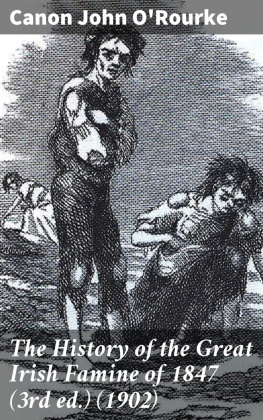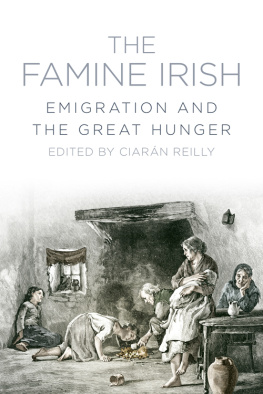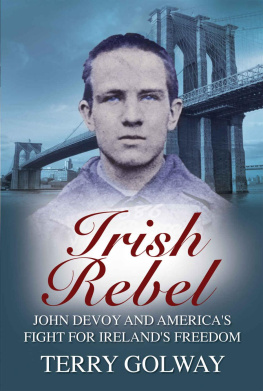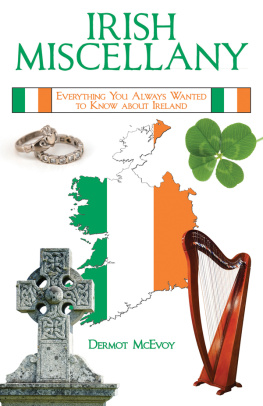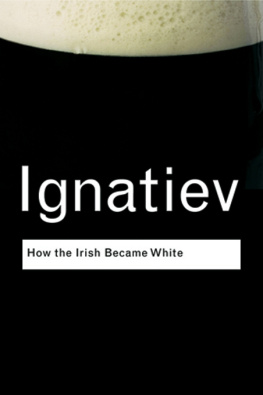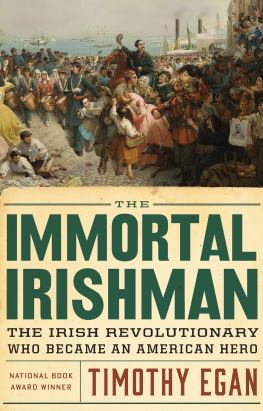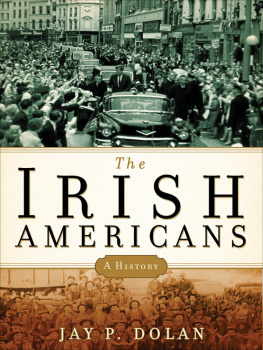

Copyright 2020 by Dermot McEvoy
All rights reserved. No part of this book may be reproduced in any manner without the express written consent of the publisher, except in the case of brief excerpts in critical reviews or articles. All inquiries should be addressed to Skyhorse Publishing, 307 West 36th Street, 11th Floor, New York, NY 10018.
Skyhorse Publishing books may be purchased in bulk at special discounts for sales promotion, corporate gifts, fund-raising, or educational purposes. Special editions can also be created to specifications. For details, contact the Special Sales Department, Skyhorse Publishing, 307 West 36th Street, 11th Floor, New York, NY 10018 or .
Skyhorse and Skyhorse Publishing are registered trademarks of Skyhorse Publishing, Inc., a Delaware corporation.
Visit our website at www.skyhorsepublishing.com.
10 9 8 7 6 5 4 3 2 1
Library of Congress Cataloging-in-Publication Data is available on file.
Cover design by Kai Texel
Print ISBN: 978-1-5107-3648-1
Ebook ISBN: 978-1-5107-3649-8
Printed in the United States of America
This book is dedicated to Judith Volkmann and her husband Neil Granger. No man has ever had better friends.
IN MEMORIAM
W hile writing this book three people very close to me died. Two nephews born two years apart died two years apart.
My nephew, William McEvoy, was a very spiritually gifted young man and he left us too soon.
Another nephew, Eugene (Geno) Cella, also left us. He was very proud of being half-Irish and was in the process of trying to get his Irish passport when he passed. Hopefully, theres a place for him in Fenian Heaven.
God love both of them.
And then theres my first cousin, Monsignor Vincent Bartley. Vince and I had a great relationship and whenever we were together there was nothing but laughter. He was the son of my Aunt Kathleen McEvoy Bartleythe matriarch of the McEvoy familyand a brave Irish revolutionary in her own right, a hostage and survivor of the North King Street Massacre in 1916 and later a member of the womens IRAs auxiliary, Cumann na mBan. When I was writing a book, Vincent was always the one I went to when I was writing about the Church. No one can imagine how much I miss him.
CONTENTS
INTRODUCTION
W hen I was a kid, my fathers Italian friends used to brag about how Columbus discovered America. But how about the Irish longshoreman who threw him the rope when he docked? the old man would retort. He was going for the laugh, but he was also sending a messagethe Irish were here in New York before you guys and they sure as hell werent leaving now.
William Faulkner once wrote, The past is never dead. Its not even past.
Especially when it comes to the Irish.
Those two statements, from my father and Faulkner, say a lot about the Irish and their relationship to New York City. Driven out of their homeland by the British, especially during the Great Famine of the 1840s, the Irish arrived in New York City with a bang. They were feared, hated, reviled, and told to go back from where they came by the WASP establishment. But that was impossible. They were stuck. And they were in Americaand New Yorkto stay.
The first thing they had to overcome, just like in Ireland, was Protestant hegemony. They did not fit into the proper, orderly little Protestant pigeonhole that was designated for them. Lets face it, they were rambunctious Catholics. And out of Ireland, they would not do what the Protestants, the same Protestants who had stolen their land and tried to starve them to death back in the old country, wanted them to do.
This time they had someone on their sidethe archbishop of New York, John Joseph Hughes. Dagger John, as he was called, would take his feral countrymen and, like a good bishop, shepherd them. In the time of the Know-Nothingsnativists who mirrored the Make America Great Again gang of today who want to keep other ethnic groups out of their AmericaHughes knew how to fight fear with fear. Bullies dont really like a fight, and if there is one thing about the Irish, they will fight. Check out the lyrics to their national anthem. In New York City, at least, the Know-Nothings would not be putting match to Catholic churches for sport. They knew better.
Every decade would bring a new challenge. The 1860s brought the Civil War. The Irish were ambivalent. They did not like the abolitionist Republican party because of their anti-Irish bias. But they saw an opportunity in war, and, as the Know-Nothings found out, they would fight for their new country, the United States of America. Without them, the Union would have been lost.
After the Civil War was over, many Union soldiers went back to Ireland to fight in the Rebellion of 1867, an unmitigated disaster for these Fenians. A few years later, out of jail and forced out of their own country again, the Fenians would find refuge inwhere else?New York City. The two most prominent, John Devoy and Jeremiah ODonovan Rossa, would stay in New York and fight for an independent Ireland with great success.
The Irish began to rise. Archbishop Hughes had set up his own Catholic infrastructureschools, hospitals, orphanages, universitiesand the Irish did not have to depend on Protestant hegemony anymore. Their system was just as good, if not better, than the services rendered to the rest of the citizens of New York.
After the Civil War, most of the ships in Manhattan, as my father had hinted, were loaded and unloaded by Irish longshoremen. And these stevedores, many Irish speakers, put their imprint on their backbreaking profession. They called their job Loingseoir . (Lung is the Irish word for boat.) It became corrupted by English speakers, and thats how anyone who works with ships became what we know today as longshoremen. The Irish were already putting their own unique stamp on their city.
Soon they were more than longshoremen. They were teachers, priests, nuns, lawyers, doctors, and, through the magic of Tammany Hall, politicians. They were cops and judges, and their politicians, like Al Smith and Jimmy Walker, were running the city and the state.
But they did not forget Ireland. John Devoy, a Fenian felon refugee, was an extraordinary mentor of revolution. Under his guidance, prominent menand martyrsof the 1916 Easter Rising were nurtured, like Tom Clarke and Sir Roger Casement. Jeremiah ODonovan Rossa engineered his dynamite campaign from Staten Island and, in his final salute to Ireland, was returned home after death to light the match in August 1915 to the blaze that would become the Easter Rebellion. Without the guidance and money from New York, there would have been no War of Independence. Eamon de Valera found refuge in New York as Michael Collins wiped out the British Secret Service, making way for the Anglo-Irish Treaty of 1921. When the North ignited again in the 1960s, New York once again became a focal point for gunrunning, money, and political agitation. And the Good Friday Agreement that finally brought peace to Northern Ireland had its genesis in the Big Apple.
Some of the Irish became Cardinals, others gangsters. Margaret Sanger took another direction and created Planned Parenthood. A man like Mike Quill, in the tradition of Jim Larkin and James Connolly, ran the transport union. Elizabeth Gurley Flynn agitated from the left. Dorothy Day inspired with the Catholic Worker Movement, and acolytes such as Michael Harrington went on to pique the soul of America and the Kennedy brothers with The Other America. W. R. Grace became the first Irish Catholic mayor of New York City while guys like George M. Cohan and James Cagney paved the way for wise guys like George Carlin from White Harlem. There were writers like Jimmy Breslin, Pete Hamill, Joe Flaherty, and Frank McCourt. Fighters for the liberal cause included Paul ODwyer from County Mayo and a millionaire from Boston named Bobby Kennedy who tried to save a Brooklyn ghetto called Bedford-Stuyvesant. There were Westies and bank robbers like Willie Sutton and cold-stone killers like Mad Dog Coll, born Uinseann Colla in County Donegal. They were all part of Irish New York.
Next page

